Miniconda
Miniconda is a minimal installer for Conda, a package management system and environment management tool popular in the Python ecosystem. Here's what Miniconda is and why you might need it:
What is Miniconda?
- Miniconda is a lightweight distribution of Conda, containing only the Conda package manager and Python. It is a smaller alternative to the full Anaconda distribution, which includes many pre-installed packages for data science, machine learning, and scientific computing.
- Miniconda allows you to create isolated Python environments and manage packages without the additional overhead of the large set of packages that come with Anaconda.
Why Might You Need Miniconda?
-
Lightweight Installation: Miniconda is much smaller than Anaconda, making it ideal if you only need the basics and prefer to install additional packages as needed.
-
Custom Environments: Miniconda lets you create environments tailored to specific projects. You can install only the packages you need, reducing clutter and potential conflicts between packages.
-
Better Control: Since Miniconda doesn't come with many pre-installed packages, you have better control over which versions of packages and dependencies you install. This can be crucial for compatibility and reproducibility.
-
Faster Setup: With Miniconda, you avoid the time-consuming installation of the full Anaconda suite, which can be over 3 GB. Miniconda is quick to set up and ready to use almost immediately.
-
Flexibility: You can install the full Anaconda distribution later if needed by running a simple command, making Miniconda a flexible starting point.
When to Choose Miniconda Over Anaconda?
- Minimalist Setup: If you prefer a minimalist setup and want to install packages only when you need them.
- Specific Projects: When working on a project with specific package requirements or when disk space is a concern.
- Advanced Users: If you're comfortable managing environments and dependencies manually, Miniconda gives you the freedom to do so.
Miniconda is a great choice for users who want to maintain a lean and efficient Python environment while still benefiting from the power of Conda for package and environment management.
Update & Upgrade the System
Open the Windows Terminal or the Ubuntu terminal. Before doing anything, simply update and upgrade the system using the following commands.
sudo apt update
sudo apt upgrade
Visit the Official Website of Miniconda
Go to the official website of Miniconda.
Scroll down until you get the Quick Command to Install section. Click the Linux section.
![]()
Install Miniconda
Click the copy button in the upper-right side of the first box and apply that whole command in the Ubuntu terminal.
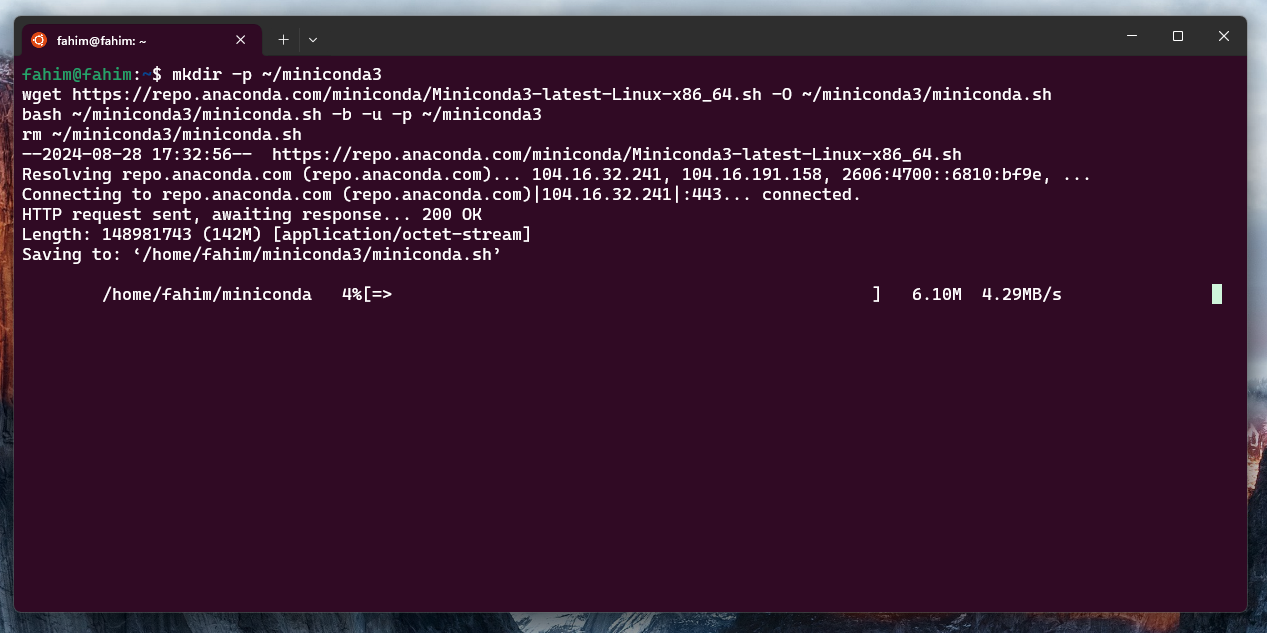
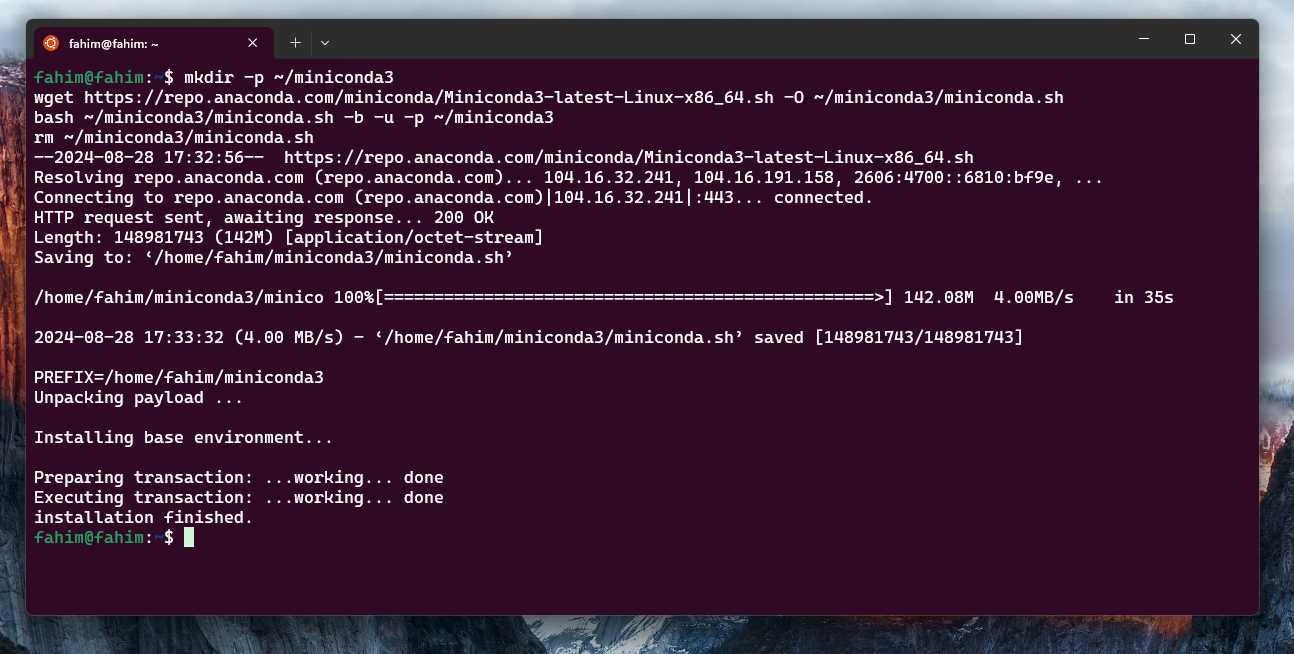
Click the copy button in the upper-right side of the second box and apply that whole command in the Ubuntu terminal.
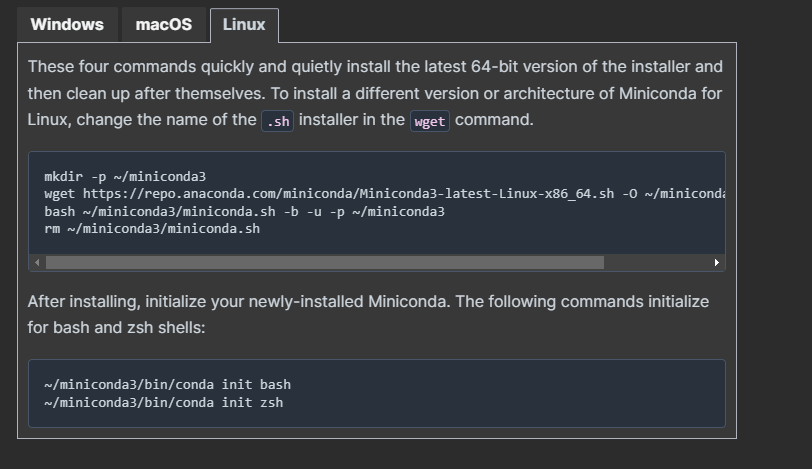
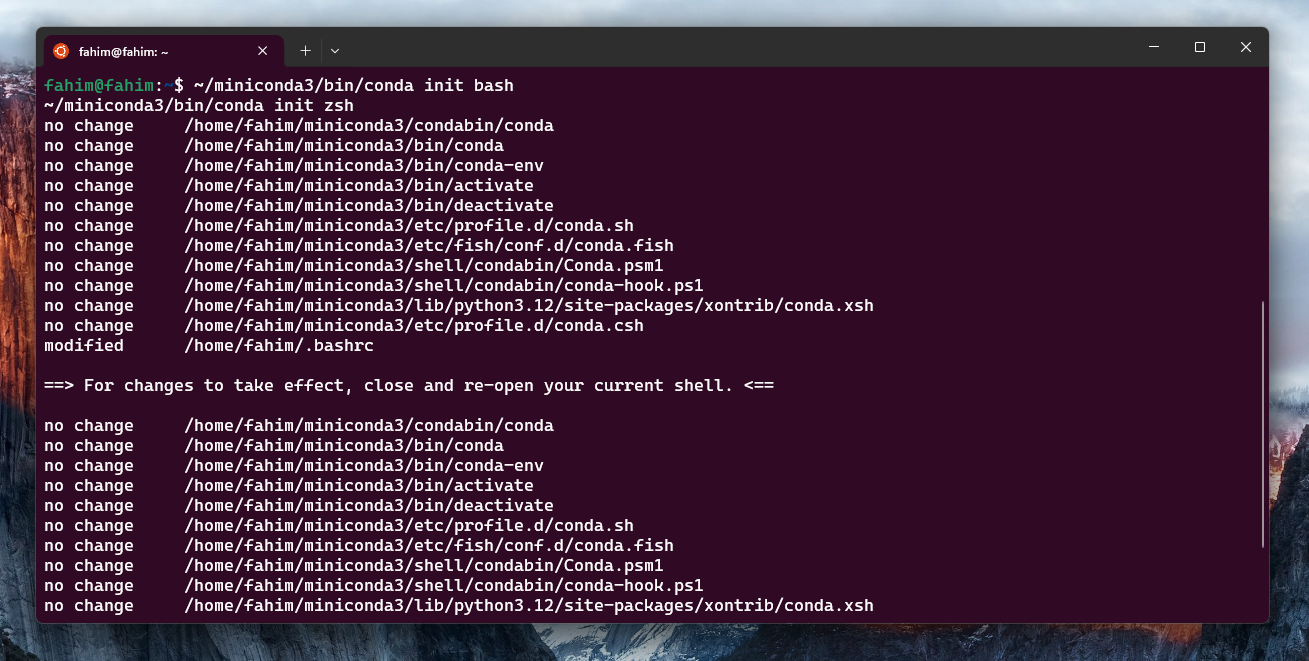
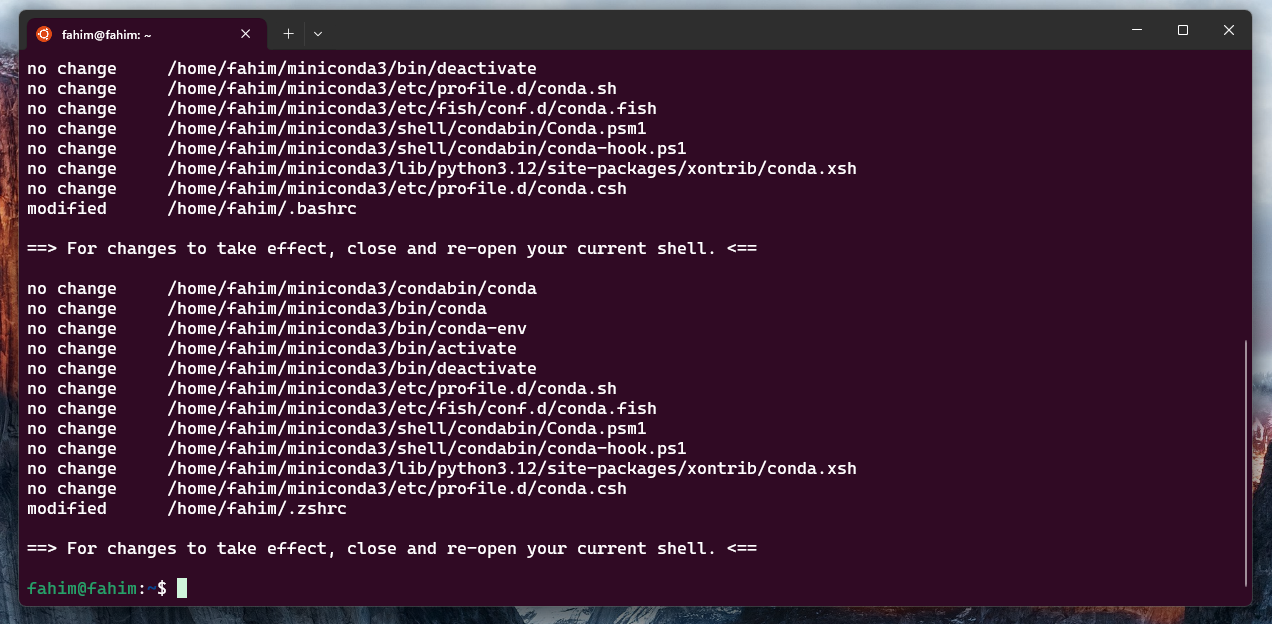
After the task is finished, simply open a new Ubuntu terminal.
Finishing
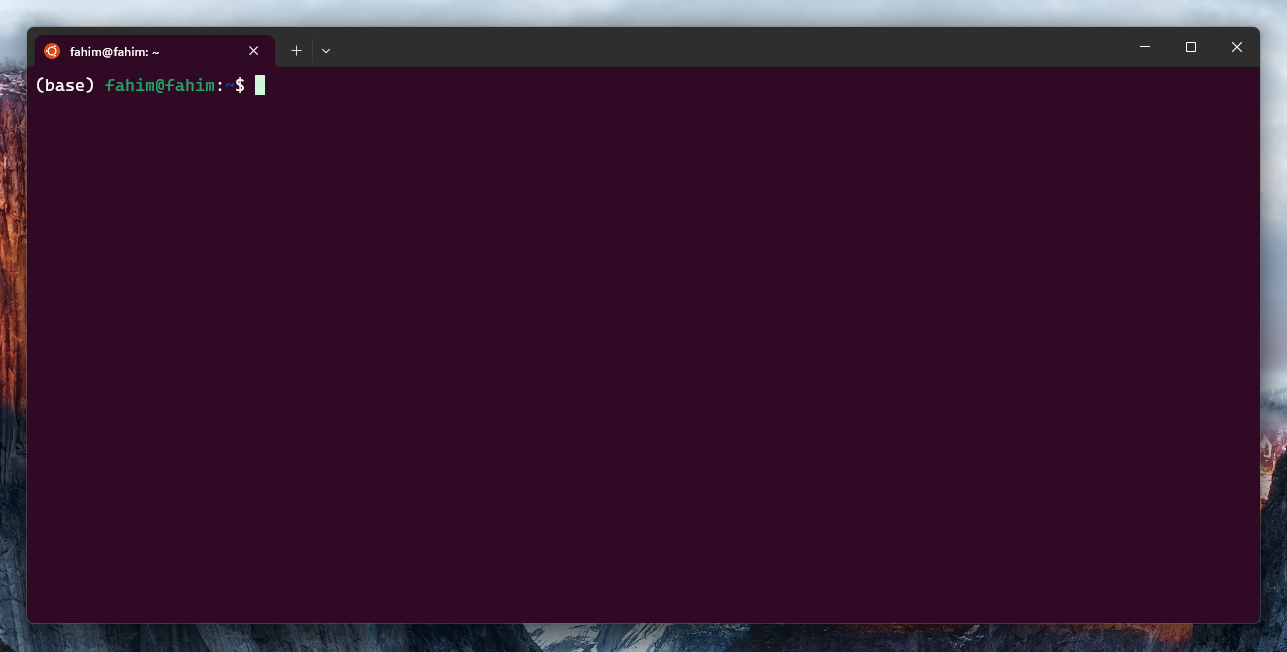
You will see (base) at the left side of the terminal command. Therefore, it is installed successfully!
If you have completed all the tasks in this page, then your Miniconda installation is completed! 🎊